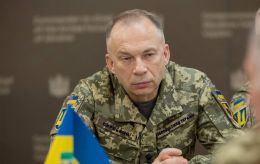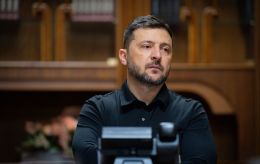Commander of 'Tavria' troops explains Russia's difficult decision to withdraw from Kherson
 Commander of the operational-strategic grouping of forces "Tavria" Oleksandr Tarnavskyi
Commander of the operational-strategic grouping of forces "Tavria" Oleksandr Tarnavskyi
During the counteroffensive of the Ukrainian Armed Forces in the south in the autumn of the previous year, the Russian forces made a difficult decision to evacuate from Kherson and the right bank of the Dnipro due to concerns about being surrounded, states the commander of the operational-strategic grouping of troops "Tavria," Oleksandr Tarnavskyi.
He mentioned that Russian forces were separated by a barrier in the form of the Dnipro River. The main part of their troops remained on territory controlled by the Ukrainian Armed Forces, where they were conducting an offensive operation.
"The Russians understood perfectly well that this grouping of forces could either be encircled or annihilated. For the Russians, the word encirclement is one of their weak points. When they hear the word encirclement, they professionally retreat. They take measures to ensure their forces do not end up in a maximum encirclement. In other words, they prefer to escape from the battlefield rather than end up encircled," Tarnavskyi explained.
The liberation of Kherson
Kherson was occupied by Russian forces in the early days of Russia's full-scale invasion of Ukraine, dating back to March 2. In June 2022, the Ukrainian Armed Forces launched a counteroffensive and pushed the occupiers back from the first line of defense in Kherson. Russia attempted to create the illusion of control by announcing a referendum on the joining of the occupied territories to the Russian Federation.
At the same time, reports indicated a gradual withdrawal of Russian forces from the right bank to the left bank of the Dnipro River, along with the transfer of the authority of the region. On November 9, Russia announced the withdrawal of its troops from Kherson to the left bank of the Dnipro.
Almost exactly one year ago, on November 11, the Ukrainian Armed Forces began entering Kherson, liberating the city after months of occupation.

